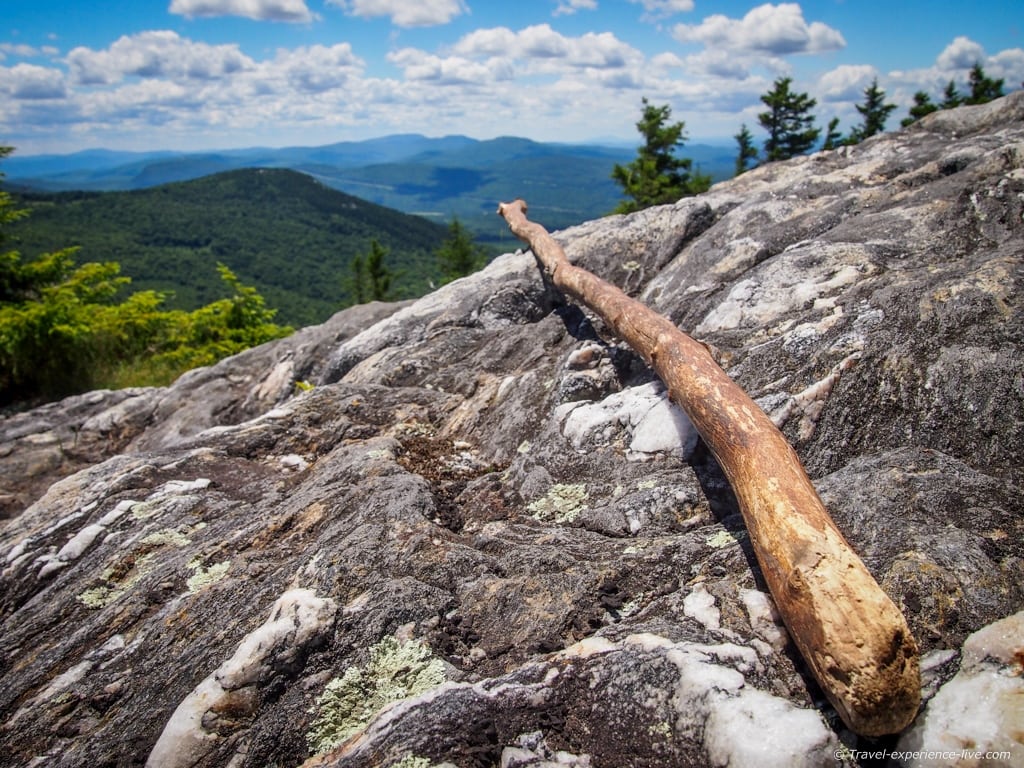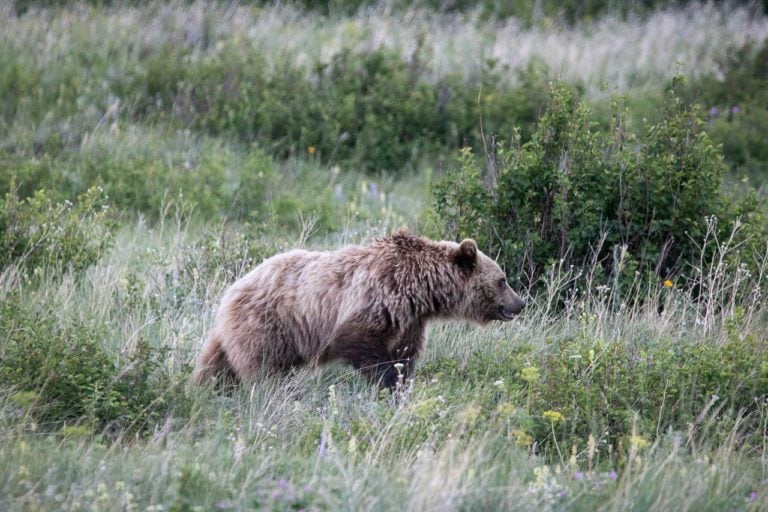9 Best U.S. National Parks for Snowshoeing Adventures
As temperatures drop across America and the days grow ever shorter, nature’s most challenging season draws out winter sports enthusiasts, who relish the opportunity to once again hit the slopes, trails and lakes.
When the first snowflakes tumble from the sky, it’s those people who start packing their skis, snowboards, snowshoes and/or fishing gear. If you’re one of them, I think you might find this blog post particularly useful.
Especially if you’re into winter hiking, you’ll want to pay the following U.S. national parks for snowshoeing a visit this time of year.
Top 9 Best U.S. National Parks for Snowshoeing
Perhaps surprisingly, the best national parks for snowshoeing aren’t necessarily northerly mountain parks. Places that are scorching hot during the rest of year may still get their fair share of snow in winter.
We’re talking about America after all, a vast country with several different regions, some of which see huge fluctuations in temperatures and changes in weather during the year.
This beauty of the following list is, I think, that it contains such a variety in parks, in every corner of the nation, that you’ll certainly find one near you.
Note that “near you” is, of course, a relative term. Yet, great national parks for snowshoeing are found from Alaska to Utah, from California to Maine.
9. Denali National Park, Alaska
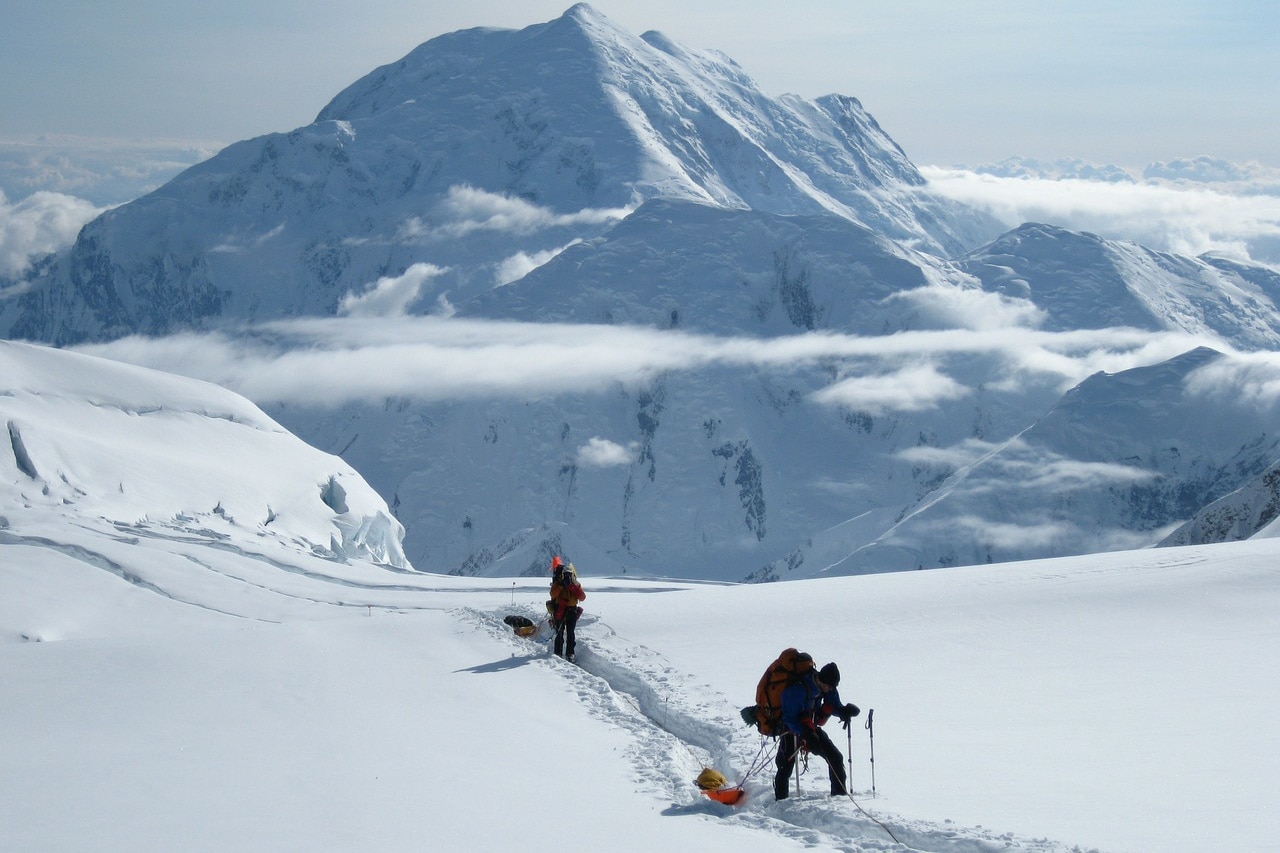
Alaska may seem like a daunting destination in winter, but it’s assuredly also nothing short of spectacular. And the epitome of all things Alaska—wilderness and wide landscapes, dramatic mountains and iconic Alaska wildlife—is Denali National Park.
Easily accessed from Anchorage, the park, which is open year-round, is centered on its namesake, Denali, the highest mountain in all North America.
Six million acres of wilderness beckon the adventurous, who cherish the chance to fully experience the power of winter. Although the days may be extremely short (no longer than five hours in late-December), there’s still plenty of time to explore the park.
Your snowshoeing options range from ranger-led walks to epic winter camping. A huge perk of visiting Denali National Park in winter are periodic Aurora Borealis sightings, so make sure to look up at night.
More information: Winter activities in Denali National Park
8. Zion National Park, Utah
Towering canyon walls, prominent rock formations and glorious views in Zion Canyon prompted early Mormon settlers to give the canyon its name, referring to the biblical place of Zion.
Ever since those pioneering days, people have visited the area and gazed in awe, mouths wide open, at these sensational landscapes.
Nowadays, Zion National Park is one of the most visited national parks in America, attracting more than four million people annually. The park is open every day of the year.
While summer receives the lion’s share of visitors, winter is much quieter and, in a way, better.
The beauty of Zion Canyon is that its low altitude makes it relatively warm, even in winter. Even when a layer of snow covers the upper layers and rims of the canyon, the canyon floor is often snow-free.
You can hike basically all the trails in Zion National Park in winter. If you’re going for a climb to the rim or a rock formation, you’ll most likely start with regular hiking boots, but will need snowshoes and crampons as you climb upward.
Heed any warnings provided by park rangers, though. If a sign says it’s not recommended to do a certain hike, don’t do it. Especially Angels Landing should not be attempted if snow or ice is present.
Probably the best trail for hiking and snowshoeing in Zion National Park is the Observation Point Trail, which leads to the grandest view in the entire park.
More information: Hiking in Zion National Park
7. Mount Rainier National Park, Washington
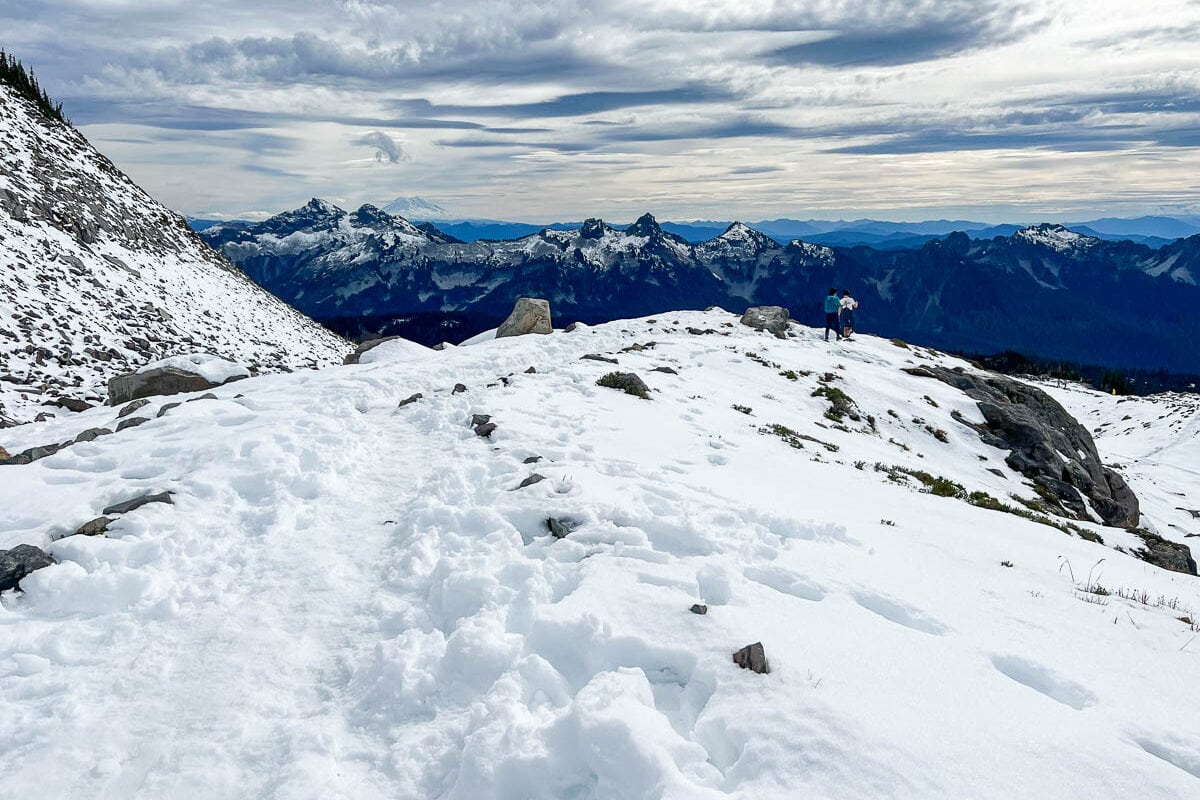
Glaciers are among Mount Rainier National Park’s key features throughout the year, a park dominated by towering mountain ranges and one massive volcano—Mount Rainier itself.
Because of the high elevation of the park, snow is actually abundant during most of the year, which makes it one of the best American national parks for snowshoeing.
During the short summer season, snowmelt feeds streams and thundering waterfalls, while wildflowers paint meadows in gorgeous colors.
Come late-October, snow begins to carpet those meadows once again, starting high in the mountains, slowly making its way down until all is covered in a thick white blanket.
Located a short drive south of Seattle or quick jaunt up from Portland, this is one of the most spectacular destinations in the Pacific Northwest for winter outdoor activities, which include skiing and snowboarding, winter camping, sledding and snowshoeing.
Before heading out on a snowshoe adventure, make sure to check the trail conditions at one of the visitor centers. Longmire Information Center is open every day; the Jackson Visitor Center at Paradise is only open on weekends and holidays.
Remember that at least five feet of snow is required to allow snowshoeing and other winter sports. This is necessary to ensure that the underlying vegetation isn’t damaged.
More information: Winter recreation in Mount Rainier National Park
6. Crater Lake National Park, Oregon
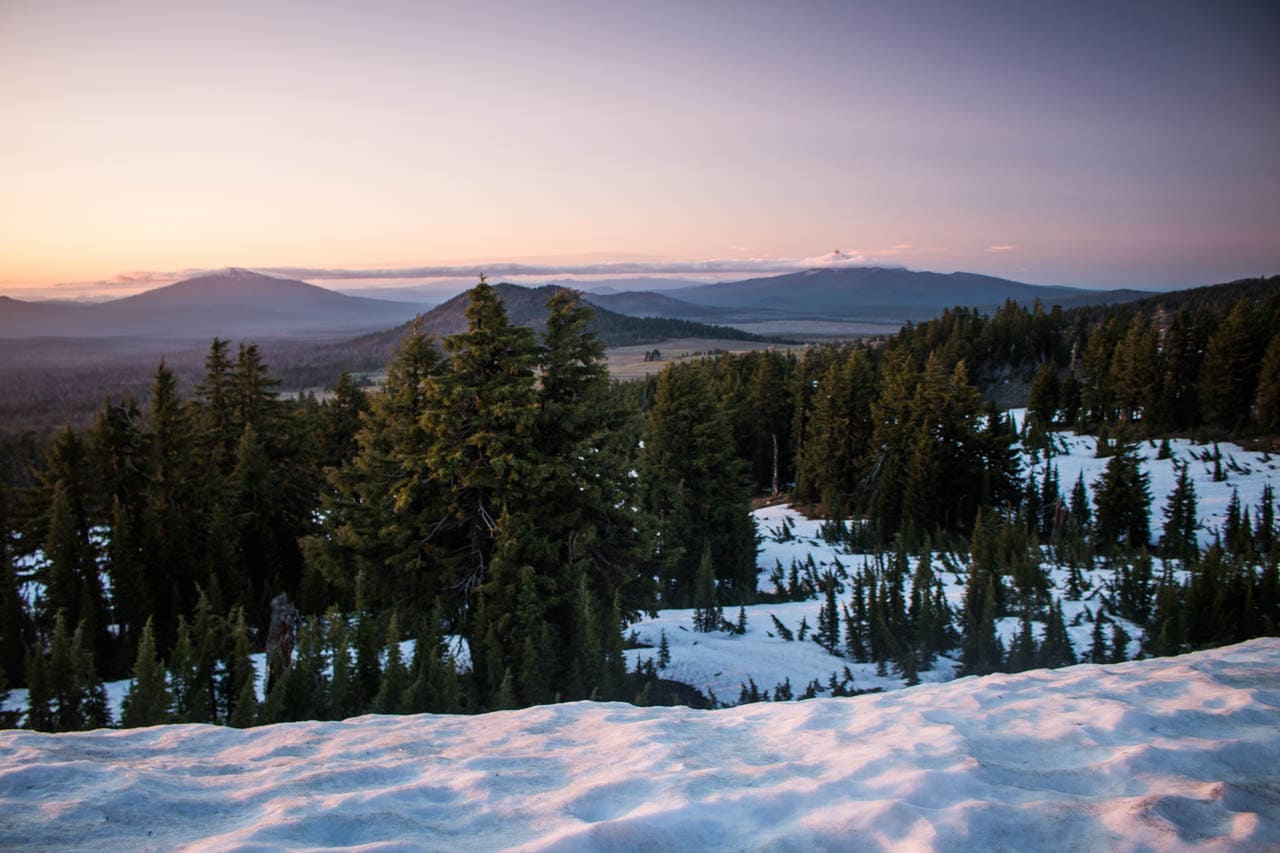
One of the snowiest places anywhere in America, Crater Lake National Park is definitely one of the best USA national parks for snowshoeing. No less than 43 feet (13 meters) of snow falls on this extinct volcano in southern Oregon.
The unique caldera lake depends on that snowfall for its very existence—there are no natural springs or streams feeding the lake. Because all water in Crater Lake comes from the sky, it’s one of the clearest and cleanest large bodies of water on earth.
While such a tremendous amount of snow poses undeniable challenges to wildlife and humans alike, it also creates an almost surreally beautiful landscape. It’s a snowshoeing paradise.
Snowshoeing is allowed on all cross-country skiing trails, but take care not to walk on the ski tracks. You’ll have plenty of options, from easy loop hikes to steep outings into the backcountry.
Whether you choose to take things easy or treat yourself to a serious challenge, snowshoeing in Crater Lake National Park is an absolute delight.
More information: Crater Lake National Park Newspaper
5. Rocky Mountain National Park, Colorado
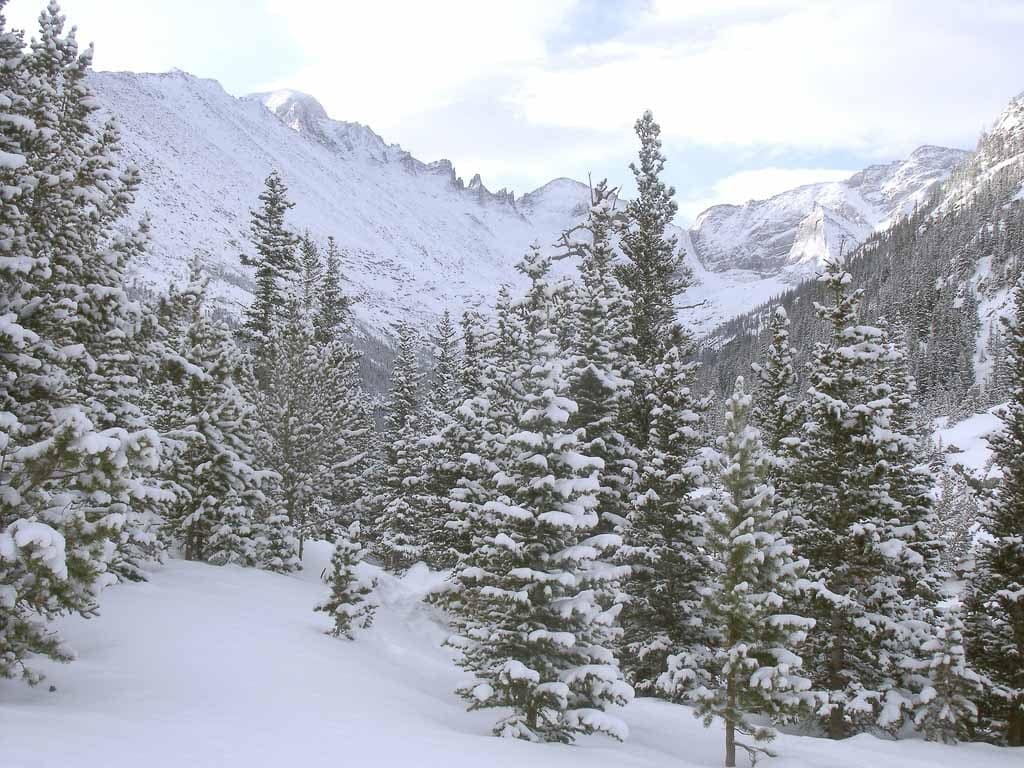
Colorado’s Rocky Mountains are among America’s best places for hiking and camping in summer, but winter, too, has its benefits. Most trails remain open throughout the year. So, strap on a pair of waterproof boots and snowshoes, grab a couple of hiking poles and head out.
The Rockies are stunning in winter, their sharp peaks covered in snow, their dense forests basking in quietness. When it comes to wildlife watching in Rocky Mountain National Park, winter is arguably the best season to do so.
Animals find less cover in leafless forests and snow’s whiteness makes them stand out even more. This is a wonderful time of year to spot large mammals, such as moose, elk, mule deer and coyotes.
More information: Winter recreation in Rocky Mountain National Park
4. Yosemite National Park, California
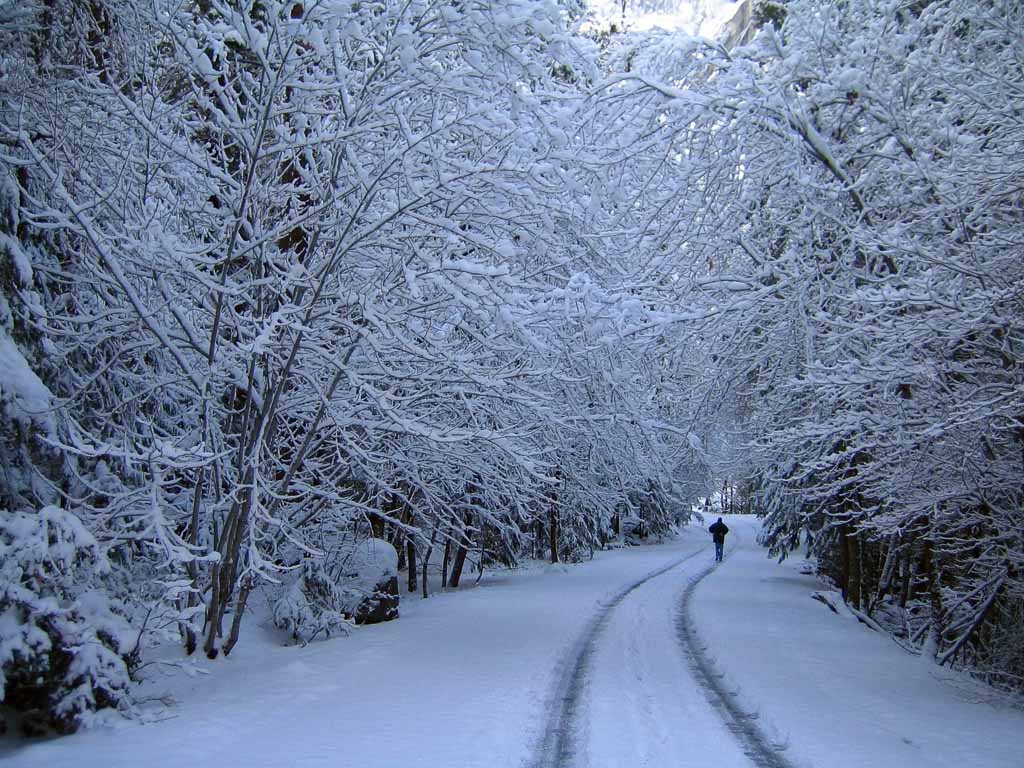
It may be glorious in spring and summer, and absolutely breathtaking in fall, but Yosemite National Park doesn’t shed any of its beauty in winter. In fact, it’s winter that brings out the wildness of this landscape even more.
Waterfalls grow icicles, mountain streams freeze, fog floats through valleys, and snow dusts summits, creating a winter landscape unlike any other in America.
Yosemite Valley, the park’s centerpiece and tourist hub, might generally not have enough snow for snowshoeing or skiing, but there are other areas that do.
Focus on Glacier Point Road and the Crane Flat Area and you’ll find several marked snowshoeing trails running through gorgeous winter landscapes.
From mid-December through March, Yosemite National Park is unquestionably one of the best national parks for snowshoeing. In winter, consider staying at the magnificent Ahwahnee Hotel, a romantic national parks lodge that’s open all year.
Additionally, the park also offers various other winter sports, from ice skating, snow tubing and sledding to downhill skiing and snowboarding. It’s easy to see why it’s one of the most popular national parks near San Francisco year-round.
More information: Winter sports in Yosemite National Park
3. Acadia National Park, Maine
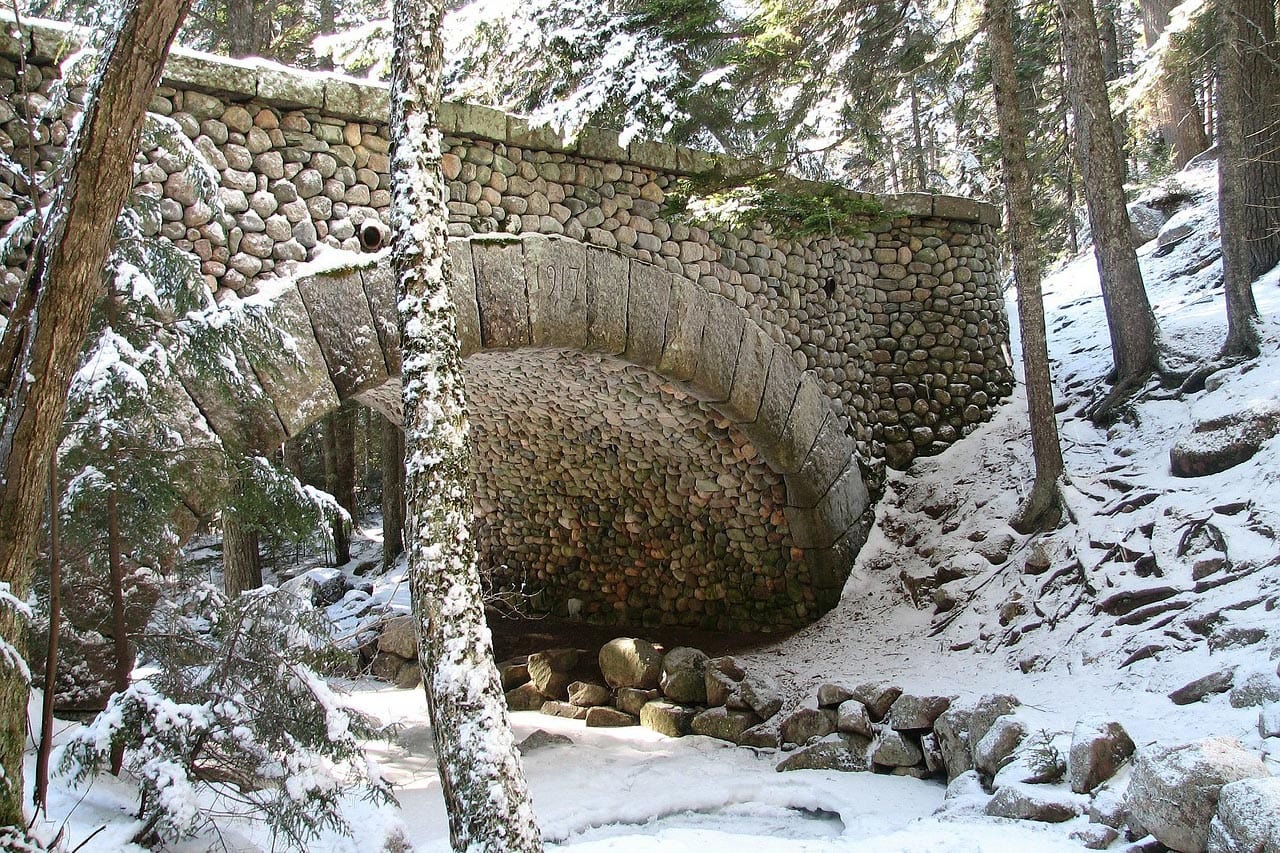
When New England’s trees have dropped their last leaves, Acadia National Park transforms into a wintry playground. Moody waves batter rocky shores, while snow carpets granite summits and chilly winds blow through pine forests.
The Northeast isn’t the most hospitable place for humans in winter, but those who do decide to venture outdoors will find beauty in its wildness.
Although Acadia’s Park Loop Road near Bar Harbor, one of the greatest national park gateway towns, is mostly closed to vehicle traffic in winter, you can actually access Jordan Pond, one of the major highlights in Acadia, and Ocean Drive.
What makes this park one of the best national parks for snowshoeing in America is its historic carriage roads. Built about a century ago, financed by philanthropist John D. Rockefeller, this network of scenic roads used to transport wealthy visitors across and around Mount Desert Island.
They were meant specifically for tourism and transporting, to let people enjoy the beauty of the area from up close.
Nowadays, there are still 45 miles (72 kilometers) of these historic carriage roads in the park. And they’re absolutely perfect for snowshoeing and cross-country skiing.
Although you’re also allowed to snowshoe on Acadia’s hiking trails, it is not recommended because of their icy conditions and steepness. Hiking trails are not maintained in winter; the carriage roads are.
More information: Winter activities in Acadia National Park
2. Yellowstone National Park, Wyoming, Montana and Idaho
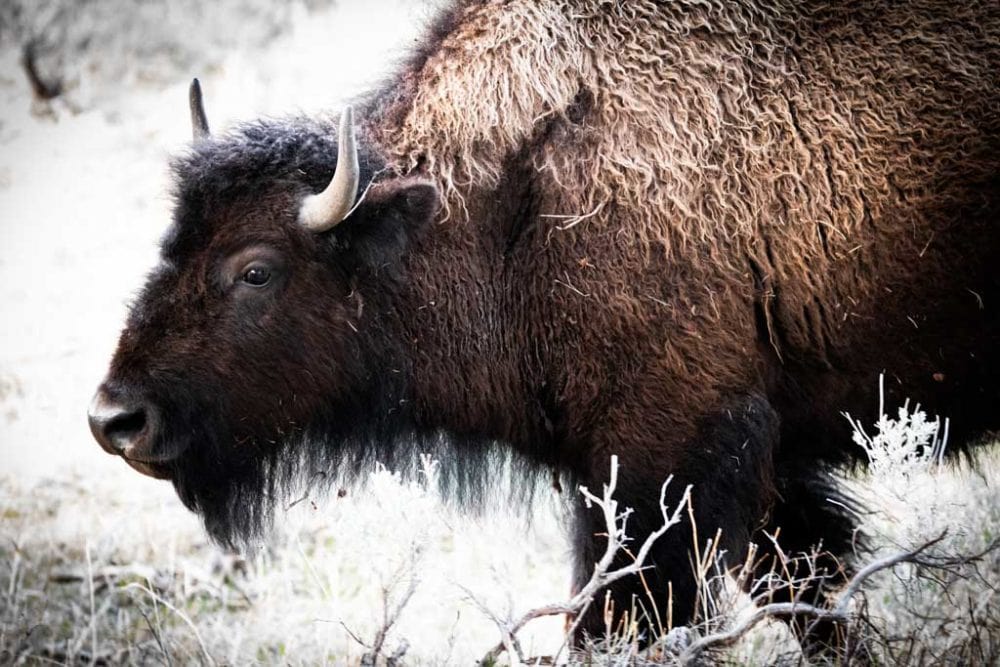
One of the world’s truly great national parks—and the oldest one—, Yellowstone National Park is one of the best parks for wildlife watching in winter.
Blizzards and bone-chilling temperatures thin the crowds, while at the same time steaming geysers and hot springs offer some welcoming warmth to wildlife, which flocks to the area in mass numbers.
Park roads close in November in preparation for winter. Restricted vehicle access means that visiting Yellowstone in winter involves parking at an entrance and taking a snowcoach or snowmobile further into the park.
Getting around Yellowstone, and to iconic spots like Old Faithful and the Grand Canyon of the Yellowstone, is only possible by “oversnow travel” from November through mid-April.
Once you’re in the park, you’re free to snowshoe on basically all trails. Although there are only a few marked and tracked snowshoeing and cross-country skiing trails, all unplowed roads and trails are open as well.
If you venture into the backcountry, it’s critical to be aware of your surroundings. Yellowstone is wild and can be dangerous year-round, but winter ups the challenge a bit more. Ice might cover hydrothermal vents, avalanches are not uncommon, and wildlife can be unpredictable. Be aware, be prepared.
Conscious snowshoers will have a blast on Yellowstone’s trails, though. This epic place becomes even more enchanting in winter and wildlife is present in abundance. American bison, elk, moose and packs of gray wolves are often spotted roaming the plains and valleys.
More information: Skiing and snowshoeing in Yellowstone National Park
1. Bryce Canyon National Park, Utah
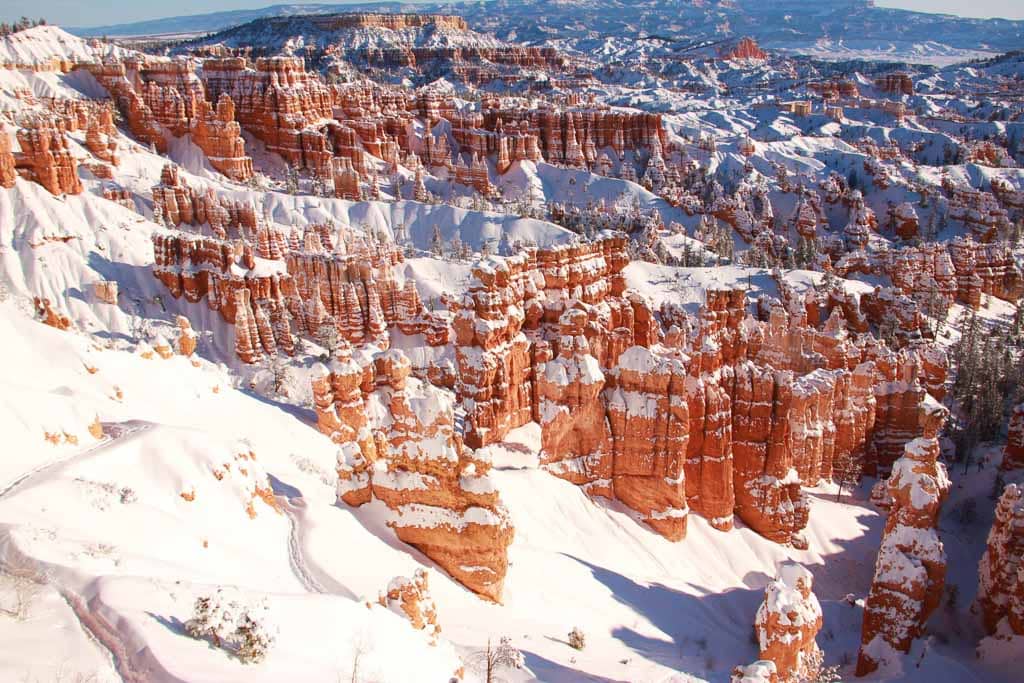
As vibrant as the otherworldly rock formations of Bryce Canyon in southern Utah are in summer, snow accentuates their orange hues even more. When ice piles up on shadowy slopes and snow covers hoodoos, Bryce Canyon National Park becomes a sensational park to visit.
While casual visitors may find enough excitement in viewing this extraordinary landscape from overlooks, the more intrepid will relish the adventure offered by Bryce Canyon in winter.
Snowfall is guaranteed in Bryce Canyon National Park, so if you’re looking for national parks for snowshoeing, this is one of your greatest options.
Note, though, that snow is not plowed in some areas of the park. The only roads, trails and parking lots that are cleared right away after snowstorms are those around the four most popular (and scenic) overlooks—Sunset, Sunrise, Inspiration and Bryce Points.
Other sections may be plowed later on, but it’s advisable to check the road and trail conditions at the visitor center before heading out.
Most of the hiking trails into Bryce Amphitheater remain open to snowshoers in winter, but you must wear the proper gear. This includes snowshoes and crampons, which are essential for a successful winter hike in Bryce Canyon National Park.
The popularity of snowshoeing in the park is proven by the existence of the Bryce Canyon Snowshoe Program, activities designed for beginning snowshoers, yet also enjoyable for more advanced adventurers.
More information: Winter activities in Bryce Canyon National Park
Other Best National Parks… Posts
- Best USA National Parks to Visit in Spring
- 11 Most Photogenic Buildings in National Parks
- Best USA Island National Parks for Summer Vacations
- 9 Gateway Towns for National Park Adventures
- Best USA National Parks for Wildlife Watching
- Amazing USA National Parks for Bird Watching
- Best USA National Parks for Road Cycling
- Best USA National Parks for Wildflowers
- Surprising Urban National Parks
- Best USA National Parks for Stargazing
- National Parks with Volcanoes
- Best National Parks to See Fall Foliage
- Best National Parks to See Northern Lights

